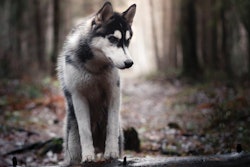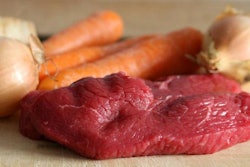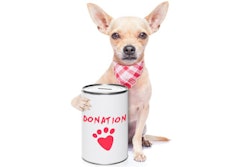
Global Pet Expo 2017 will feature 3,435 booths from 1,130 exhibitors, and I’m predicting that at least 67 percent of the booths will feature dog treats. Natural dog treats, probably grain free, too.
OK, I’m completely making up that percentage – but it does seem each year that this show, one of the largest pet trade shows in the US (and globally), features ever more dog treats. And natural and grain-free claims on treats, as well as pet foods, are nearly ubiquitous. (By the way, the numbers of booths and exhibitors are real, according to the American Pet Products Association, organizers of the show, which said it sold out booth space in late February 2017.)
So, what else can we expect to see at Global Pet Expo this year in terms of ongoing and new pet food trends? Here’s my annual list of predictions and speculations.
1. Continued focus on small dogs and cats. Small and toy breed dogs keep growing in popularity, as human populations around the world become more urban, the rising group of millennial pet owners opt for smaller, more affordable mouths to feed and, at the other end of the generational spectrum, older pet owners choose pets that are easier to care for and handle. These factors apply to cats, too, to some extent.
Pet food companies are responding with special formulas for small and toy breed dogs, smaller kibble in dry products and more wet products for small dogs and cats. The latter are more likely to be in trays and pouches, delivering more suitable portion sizes for these pets and convenience for their owners (especially compared to cans). The 2016 trade shows featured many of these products; I predict 2017 will see even more manufacturers and brands jumping on the small pet bandwagon.
2. Pet food is all wet. Well, that’s an exaggeration, as dry pet food still dominates the global market, and other formats (freeze dried, dehydrated, raw) continue to grow. Yet wet pet food is enjoying a growth spurt of its own, driven mainly by the trends spurring the proliferation of products for small dogs and cats. Another factor is that this category is finally catching up to all the trends we’ve been seeing in other pet food formats, including treats, for several years now: grain free, high protein, health and wellness, condition-specific, superfoods and the like.
3. For fat cats and dogs. Wet pet food might also be getting more attention and product development love because of the ongoing problem of pet obesity. According to the Association for the Prevention of Pet Obesity (APOP), 59 percent of US cats and 54 percent of dogs are overweight or obese, and other developed markets report similar levels. Because of its high water content, wet pet food is reported to help pets feel fuller faster – but the question remains of whether owners of overweight or obese pets understand that and how to feed wet pet food appropriately to encourage weight loss. (Or, if they have a weird cat like mine that refuses all wet food.)
Will pet food companies exhibiting at Global Pet Expo feature other new products targeted at weight loss or control? Let’s hope so. I’ll also be on the lookout for potential technology solutions, such as the Obe ProBowl. Its main marketing claim is that it automates pet food purchases, even automatically reordering through Amazon.com (which, I have to say, sounds pretty sweet). Yet it also tracks a pet’s food and water intake and provides feedback on consumption, which could help the owner of an overweight pet comprehend how much the pet is taking in versus what it should, and share that information with a veterinarian for weight control advice. In fact, Ernie Ward, DVM, founder of APOP, helped develop the ProBowl.
4. New players offering complete pet diets. A trend has developed the past few years of companies that had offered only treats expanding into complete and balanced pet foods. That seems to be growing; in fact, I’m meeting with one such company during Global Pet Expo. Joining this group are other companies that had been operating in less closely related product categories – cat litter, for example, as Lucy Pet recently launched a new line of dog and cat food. (Lucy was started by Joey Herrick, founder of Natural Balance Pet Food, so I guess it’s no surprise his new company would eventually get into pet food, too.) We likely also will continue to see more human food players enter the pet food arena, which I’ll watch for at Global Pet Expo.
5. Transparency, clarity, certification. Global Pet Expo 2016 saw pet food company booths starting to focus on transparency and certification. For example, Open Farm’s booth featured large panels explaining its Certified Humane claim (the foundation of the brand), while Champion Petfoods put on a “Meatmath” display, with its centerpiece a large bar of the actual, raw meats, fish, vegetables and other ingredients used in its food. The concept extended to Champion’s product packaging, with clear graphics and text showing the amount of meat, how much was fresh or whole, and its source, among other elements.
Those are just two examples of pet food makers responding to demands for transparency, clearer product labels and verification of sourcing, sustainability and other aspects of ingredients – demands coming not just from consumers but also from pet retailers, the main audience of shows like Global Pet Expo and, in many cases, the first contact for a pet owner seeking a new or special pet food. So it makes sense for pet food companies to promote that angle with pet store buyers at a trade show, and I expect more will do so this year.


















